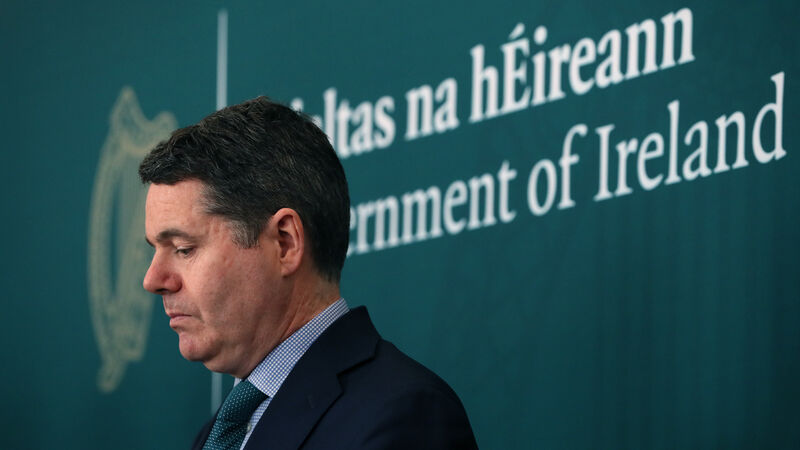Séamus Boland: Banking review should embrace a third force

Finance Minister Paschal Donohoe formally launched the Government's wide-reaching review of the banking sector, which is likely to run for 12 months.
When the global financial crisis hit Ireland in 2008, culminating in a financial catastrophe in 2010, it was clear that the underlying cause was our dysfunctional banking system.
Somehow, we managed — through a combination of lax regulation and a complete failure to control the construction industry’s runaway development — to crash our economy and send thousands of people into economic disaster.
In the wall-to-wall coverage of a nation deep in an existential crisis, we were now begging for rescue.
For the EU, we became the hapless guinea pig for similar rescues of countries like Portugal, Greece, and Spain.
We now congratulate ourselves in managing to extricate ourselves, somewhat, from this dark period.
We are still paying for these choices. Yes, we managed — to some degree — to keep social welfare payments steady.
However, cuts in many of the social services, including health and education, meant that we are still catching up, and the real legacy is our failure to solve the massive dysfunctional banking system.
Currently, the banking system is best described as dependent on the support of the State.
AIB and Permanent TSB are still heavily owned by the State; Bank of Ireland slightly less so.
All others, not under the control of the State have left or are leaving.
While we can speculate on their reasons, it is clear that they no longer believe that the Irish market is worth it. The obvious question arises.
If Bank of Ireland and AIB were not connected to State control, would they remain in Ireland? If the answer is no, then it is clear that Ireland is dependent on an international, corporate model of banking; one that seeks to maximise profits based on large international accounts.
It is surely logical to assume that once the State is separated from the banking system, these banks will move on, leaving us without any native banking system.
Unfortunately, our large SME sector does not fit easily into the aims of these large corporates.
The answer to this type of banking has been demonstrated in most economies by the creation of a middle, or third, banking tier.
There are different examples to examine — ranging from the Sparkasse model in Germany to similar models in Spain, Britain, and Scandinavia and many more.
They all separate themselves from the aims of the large international corporate model and concentrate on the support of the SME sector.
It is a system not new to Ireland. In the 1970s, 1980s, and early 1990s, we had the Agricultural Credit Corporation (ACC) and the Industrial Credit Corporation (ICC) which were dedicated to the provision of banking services to a range of agricultural and SME customers, who were not properly serviced by the main pillar banks of the day.
It is widely accepted that without this, specifically Irish system of public banking, these sectors would not have developed the way they have. Indeed, agriculture owes its current multi-billion worth to the early support of the ACC.
It is incredible that any banking review does not examine the reasons why Ulster Bank and others are leaving the market.
Much of this is service-based, while a significant segment is indigenous with dependency on the export market.
The profit margins are tight ranging between 2% and 7%; margins that do not excite the large pillar banks.
It is clear that any banking review that ignores the need for a third banking sector based on international public banking principles; risks another banking crisis.
There was a good financial reason why, as a State, we established the ACC and ICC. It was entrenched in the reality that the corporate pillar bank system is too big for Ireland and when the current pillar banks are free of state control, they too will exit Ireland.









